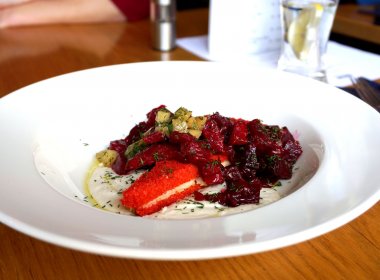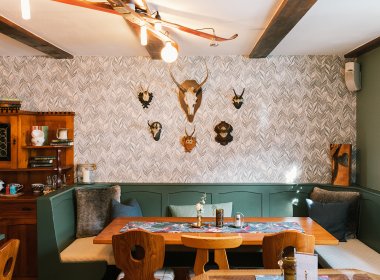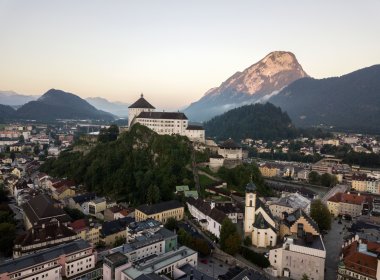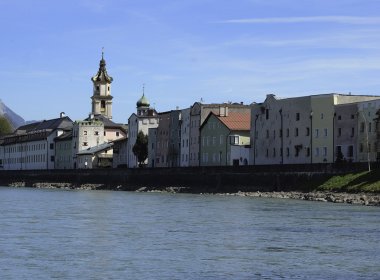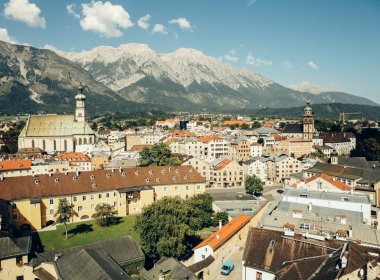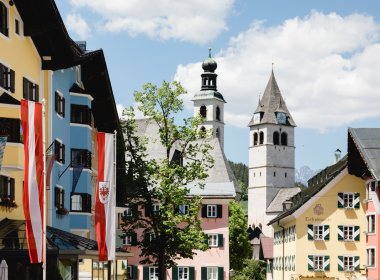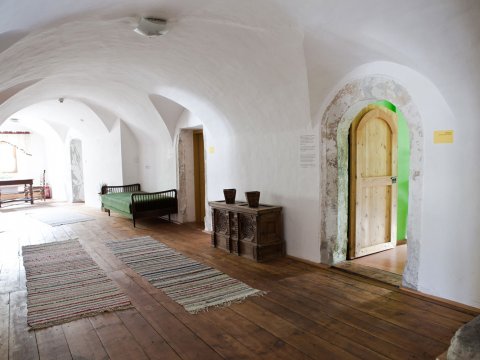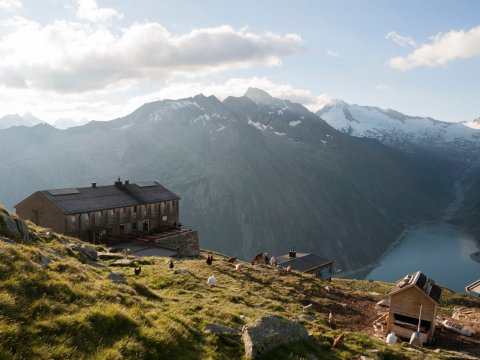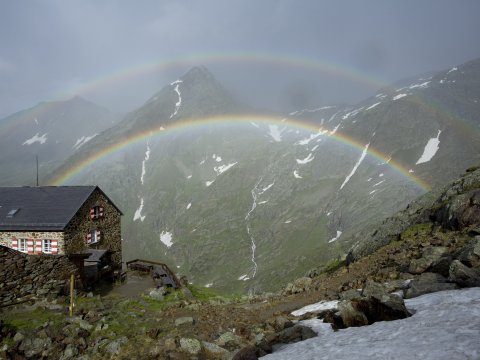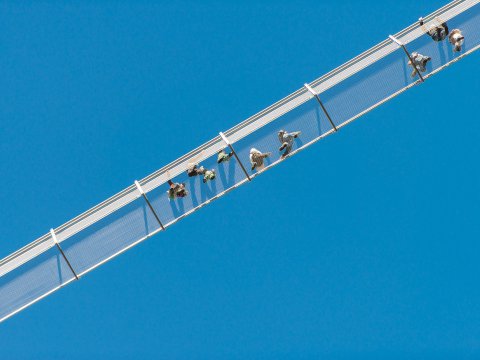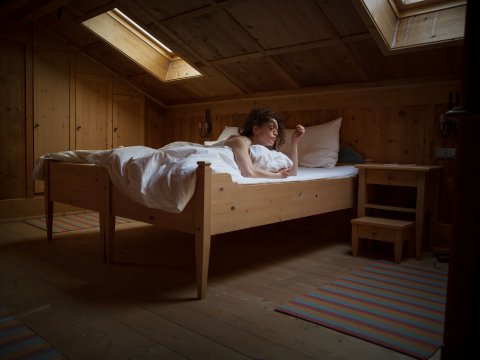A Town Steeped in History: A Day in Schwaz
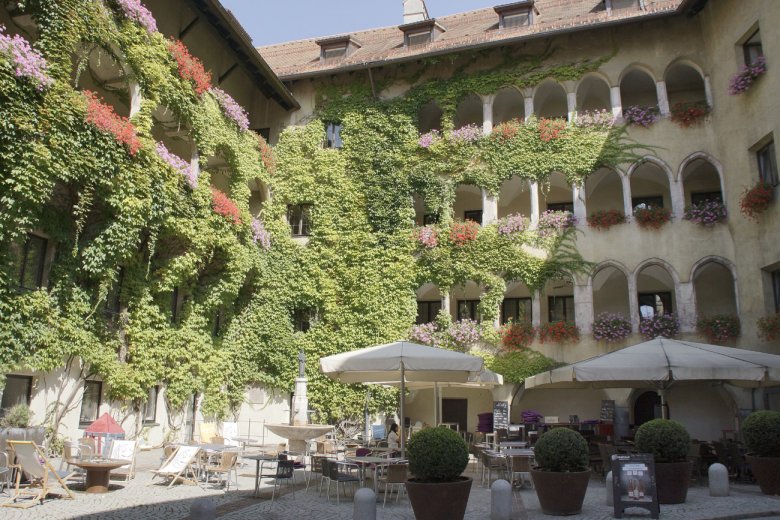
Up to now, the only thing that came to my mind when thinking of Schwaz was the Silver Mine. I had visited the town’s foremost attraction back in elementary school. Boarding a mini train and venturing deep in the bowels of the silver mine was an exhilarating experience for us kids. At the end of the tour we could all strike our own souvenir coin on a hand powered screw press. That is more or less all I remember from my first visit to Schwaz. Thus, I wondered if there are more reasons to make a trip to Schwaz: What else is there to discover in this little town? At the end of the day, I knew: Schwaz and me, that is love at second sight.
Schwaz wielded clout in the Middle Ages when its eyes shone brightly with silver – past glory that I relived by joining a guided tour of town. Each Thursday, Schwaz offers free walking tours discovering history and curiosities of the highlights of town. Led by Maria Egger, who has been guiding tours in Schwaz for three years, the appealing stroll takes in not only the traditional attractions but also the hidden gems.
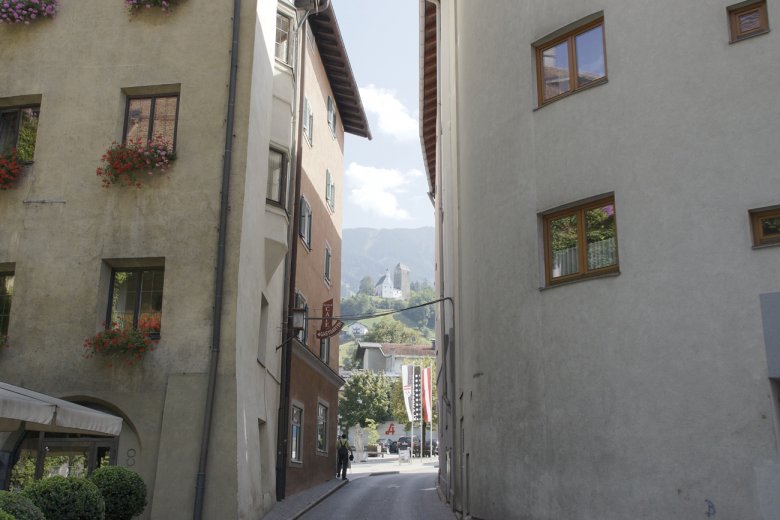
The Upswing of Schwaz to the Most Important Silver Mining Center.
The first settlement of Schwaz can be traced back to Neolithic times and the Bronze Age. It first appeared in historical documents in the year 930/931. A keep was constructed above Schwaz in the year of 1170 by the lords of Frundsberg (also called Freundsberg). Later the single keep was extended into a fortification. Real significance was added to Schwaz when silver deposits were discovered around 1409 – legend has it that a farm girl named “Kandlerin” found the silver ore while herding cattle on an Alpine pasture. A bull is said to have dug the ground with its horns and the silver ore was exposed. This led to the upswing of Schwaz to the most important silver mining center of that time. During the 15th and 16th centuries, Schwaz provided mineral wealth for the Austrian emperors and other dignitaries and became the economic powerhouse of Europe. Maria Egger shows me silver ore stones that can still be admired above some house entrances in Schwaz – signifying that this once was the home of a so-called ‘Gewerke’, an entrepreneur with mining rights in contrast to the poor and hardworking miners.

The Old Town: From Town Hall to Parish Church.
We begin our tour of town at the ‘Stadtgalerien’, a contemporary shopping mall that was erected on the site of the former tobacco company, the “Imperial and Royal Tobacco Factory at Schwaz”. For 175 years, the factory produced 2.6 billion cigarettes a year.

The beautifully decorated “Rathaus”, the town hall of Schwaz, used to be a trading company. It was built between 1500 and 1509 by the ‘Gewerke’ Hans and Jörg Stöckl and is the most powerful non-church building from the mine time. Under the bay in the town square stands the bronze statue of Jörg Frundsberg, the founding father of town. The Rathaus is three stories high and has a beautiful inner courtyard with arcades that are overgrown with ivy.

Just opposite of the town hall is the flagship store and couture atelier of Tirol-native designer Markus Spatzier. His designs are elegant, extravagant and a little bit crazy and his label takes events throughout Austria and beyond by storm.
While we walk along Franz-Josef-Straße, the main street to walk along in the historic center of Schwaz, Maria Egger reveals the history of the town to me. I learn that Schwaz received its city rights only in 1898 for the lack of a town wall and that Schwaz was divided in two – burghers and ‘Gewerke’ resided on one side, whereas the simple miners who used to toil in the narrow tunnels under extreme working conditions had to live on the other side. The Schwaz silver was made into coins at the nearby Mint in Hall; Schwaz did not have the right of coinage.
What Does Schwaz Has to Do With an Elephant?
We stop in front of a broad gateway. In earlier times, explains Maria, the gateways had to be that broad for a horse-drawn carriage to pass through. She points at a sign with an elephant on it. “Do you know why many guesthouses and inns across Tirol have a sign showing an elephant?”
This unique story refers to Suleiman, an Asian Elephant that was presented to the Habsburg Archduke Maximilian II and later Holy Roman Emperor in 1551. Suleiman was shipped from Spain’s Barcelona to Italy’s Genoa, and then travelled overland via Trento and across Brenner Pass to Tirol, from where he was transported to Vienna. The elephant travelled by foot with a retinue and many of the places he passed by installed signs showing an elephant. I want to know what happened to the elephant. Well, he died one year after his arrival in Vienna, my knowledgeable guide tells me. The elephant’s skin was stuffed and the bones were fashioned into a chair.


Taking pride of place on the end of pedestrianised Franz-Josef-Straße, the Parish Church of Schwaz is famous for its elaborate Gothic appearance, which has been preserved since its completion in the year 1502. It was built during the peak of Schwaz’ economic boom period and is the largest Gothic church in Tirol. Having changed little over the centuries, the church stood the test of time and survived the devastating fire of 1809 and two World Wars. Among the most precious possessions in its interior are three Baroque altars (there once were 14 of them) and a remarkable baptismal font.
A 500 Year Old Roof Truss.
What immediately caught my eye was its step-gabled roof bearing 15,000 copper tiles. The roof truss (which can only be seen on a guided tour) is a well-preserved 500-year-old medieval structure. The roof trusses were made from 770 cubic meters of timber and the copper tiles, which were all cast in Schwaz, weigh about 58 tons. Everything about this timber structure is absolutely brilliant. It took three years to complete. “Carpenter Thomas Schweinebacher has created a true masterpiece of craftsmanship,” says Maria Egger. I can only agree.

Right next to the church lies Enzenberg Palace, which was built in 1515 by Veit Jakob Tänzel. The splendid and ornate building has an arcade connecting to the parish church, as the Enzenberg Family were patrons of the church. Today, Enzenberg Palace houses the Contemporary Art Gallery of Schwaz.
Old Walls.
We continue our discovery tour underground and explore the 500-year old cellar of the Palace. These old walls have stories to tell, after all the cellar has been well preserved over the centuries. In time long past, it was used to store foods. They used to fetch ice from the glaciers to cool the food, explains Maria Egger. Today, the cellar houses ancient wine barrels that are not in use anymore.
Having visited the church and the cellar, our next stop is the smallish “Totenkapelle”, literally the ‘chapel of the dead’ that dates back to the year 1504. It is two stories high and comprises the chapel of St. Michael and St. Veit. I discover a handrail with toads and snakes, which were meant to ward off evil.
The town park behind the parish church is where the old town cemetery is located. No longer are the graves in the ground, instead, the plaques and memorials are situated on the walls under the beautiful arched arcades. There is another thing particularly worth noting about the church: One of the two steeples was built in 1911 in order to „replace“ and support the other. This became necessary after an examination revealed that the old bell tower was in danger to fall apart and was closed down. It was feared the old church tower may have tilted or toppled over one day, when the bell was being rung. Moreover, Schwaz has a bell named ‘Maria Maximiliana’, which is rung when bad weather threatens.
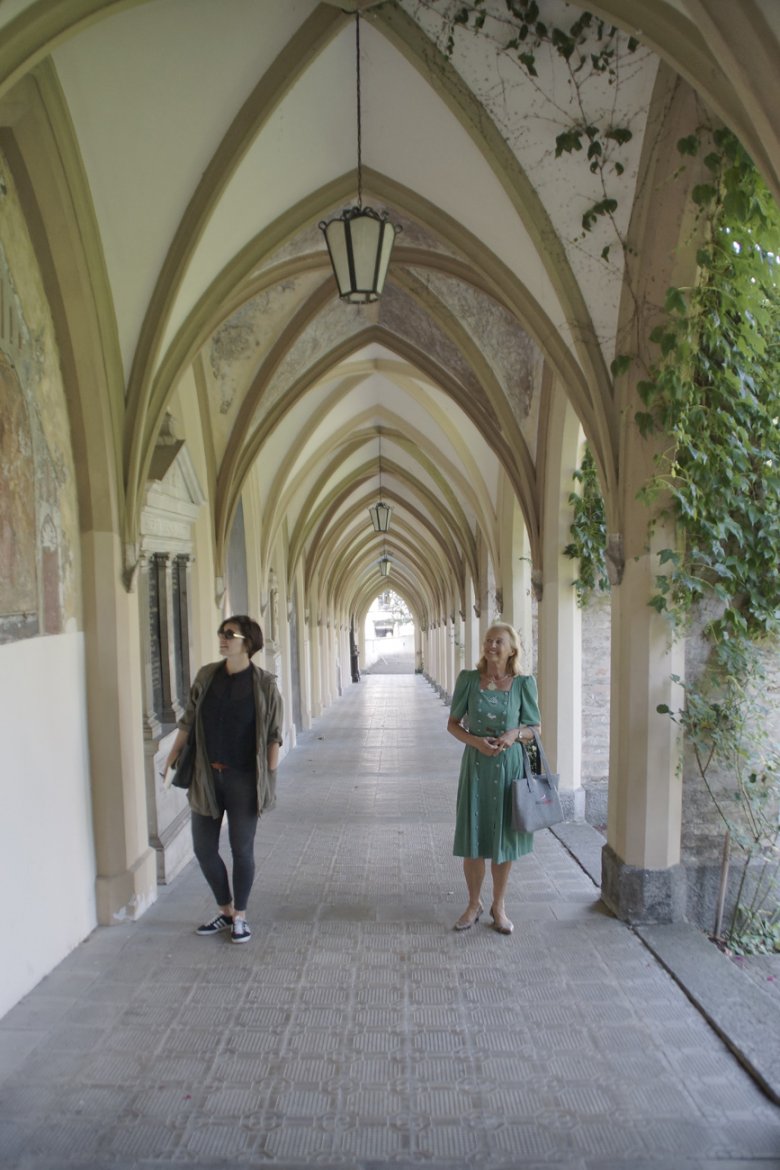
In the Footsteps of Paracelsus.
Our walk continues to Orglerhaus, the only farm existing in today’s Schwaz. It is said that the medical outlaw Paracelsus stayed here on his trips to Schwaz. We meet the senior owner of Orglerhaus and he tells us that the cellar looks just the same as back in the 16th century, when Paracelsus spent time there, doing „research“ in pharmacology, alchemy and the illnesses of the local miners. Mag. Schwitzer from Marien Apotheke pharmacy confirms this, saying that Paracelsus has visited Schwaz two to three times. When it comes to his death, still much controversy prevails. Rumour has it, that his death may have been hastened by a scuffle with assassins in the pay of the powerful Fugger Family, which he had angered with his work for the poor miners, but there is no actual foundation for this story.
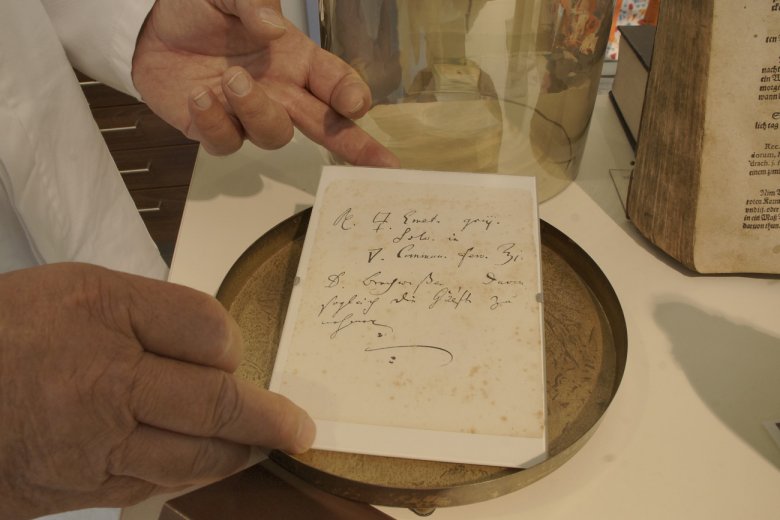
The Fugger Family – Wealthy and Powerful.
An architectural masterpiece, the Fugger House is another witness of the lively past of Schwaz. It was the local residence of the Fugger family and dates back to c1525. The Fugger Family was both wealthy and powerful, they were the bankers of the Popes and Emperors and operated trade throughout the then known world. In fact, they were the richest people of Europe.
From this building, Ulrich Fugger managed his global company from time to time. World history was written with Schwaz silver and copper and it made the Fuggers among the most powerful and richest trading families toward the end of the Middle Ages. These days, the Fugger House, once the residence of the richest, houses a shelter for the poorest of town, the homeless.

The last stop on our tour is the Franciscan Monastery. The cloister of the monastery is a unique gem and was decorated by Father Wilhelm of Swabia with scenes from the Passion of Christ. The sketches for the stations of the cross were drawn between 1519 and 1526. Unfortunately, some of them are not recognizable anymore, despite restoration works. However, overall, it is a fascinating collection of 16th century graphic artwork. Each painting has its own patron, who is depicted with coat of arms (and portraits in case of men). So you could choose your “favourite scene” from the Passion of Christ, pay for the painting and you were guaranteed to go to heaven straight away after death. How convenient!
Schwaz, I Like You a Lot!
Schwaz offers a general prettiness that is best explored by walking around in the town center. Once again, I stroll down the pedestrianised main street. Schwaz really surprised and appealed to me. At the end of the day, I drive my car to the Silver Mine: A group of visitors, all dressed up in silver coats, is just leaving the mine. I wonder if they are going to strike their own souvenir coin now?
Strongly Recommended: Freundsberg Castle.
High above Schwaz, the former fortification of town sits enthroned on a hill visible from afar. Freundsberg Castle was the ancestral seat of the Lords of Freundsberg. Today it houses the Municipal Museum and a café and restaurant. Unfortunately, the castle was closed the day I visited. The view of town from up there was amazing and well worth the effort.


Dining:
I enjoyed a wonderful lunch in the shady and delightful beer garden of Gasthaus Himmelhof, just the right place to gather new strength after the exertion of sightseeing.











